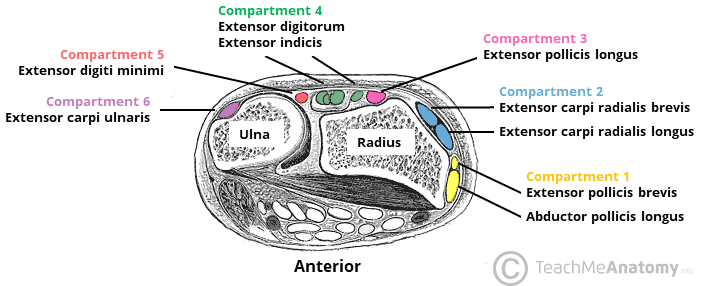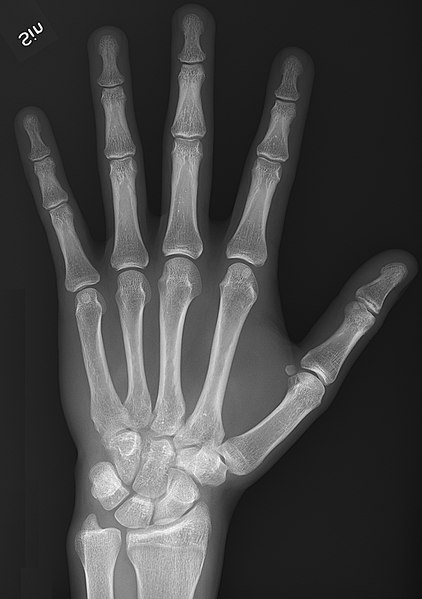Introduction
De Quervain’s tenosynovitis is caused by friction of the tendons within the first extensor compartment of the wrist against a thickened extensor retinaculum, resulting in wrist pain and swelling.
It is most common in women aged between 30 to 50yrs, especially in those with occupations or hobbies involving repetitive movements of the wrist.
In this article, we shall look at the pathophysiology, clinical features and management of De Quervain’s tenosynovitis.
The Extensor Compartment of the Wrist
There are 6 extensor compartments on the dorsal aspect of the wrist, each containing separate tendon groups (from lateral to medial):
(1) Extensor pollicis brevis and abductor pollicis longus (2) Extensor carpi radialis longus and brevis (3) Extensor pollicis longus (4) Extensor indicis and extensor digitorum (5) Extensor digiti minimi (6) Extensor carpi ulnaris
De Quervain’s tenosynovitis involves the tendons of the first extensoior compartment – extensor pollicis brevis and abductor pollicis longus.
Risk Factors
The main risk factors for developing De Quervain’s tenosynovitis include age (most common in those aged between 30 and 50yrs), female gender, and during pregnancy
Certain occupations or hobbies, especially those that involve repetitive movements of the hand and wrist, also increase the risk of developing the condition.
Clinical Features
Patients with De Quervain’s tenosynovitis will often complain of pain near the base of the thumb with an associated swelling (secondary to thickening of the tendon sheath). Movements involving grasping or pinching are particularly painful and difficult
On examination of the hand, there will be swelling and palpable thickening over the tendon group fibrous sheath. Finkelstein’s test is often positive.
Finkelstein’s Test
The examiner applies longitudinal traction and ulnar deviation to the affected thumb. Pain specifically at the radial styloid process and along the length of the extensor pollicis brevis and abductor pollicis longus tendons is a positive test for De Quervain’s tenosynovitis.
Differential Diagnosis
Differentials to consider include:
- Arthritis of Carpometacarpal (CMC) joint – symptoms will be more gradual in onset, with a positive Grind test on examination
- The Grind test involves forcefully pushing thumb against CMC joint whilst also rotating it slightly, with a positive result producing pain felt on the volar side of the wrist
- Intersection syndrome – tendons of the first compartment cross over with those of the second compartment, resulting in pain felt over the second compartment
- Wartenberg’s syndrome – a neuritis of the superficial radial nerve, often occurring in those wearing tight jewellery
Investigations
De Quervain’s tenosynovitis is a clinical diagnosis, with no investigations required.
However, a plain film radiograph of the hand (Fig. 2) may be used to exclude other diagnoses (such as CMC joint arthritis)
Management
Conservative management of De Quervain’s tenosynovitis involves lifestyle advice (avoiding repetitive actions) and a wrist splint (such as a thumb spica brace). Steroid injections will reduce swelling and relieve pain in most cases, and can be repeated several times if a good response is observed.
For those failing to respond to conservative management, surgical decompression of the extensor compartment can be performed under local or general anaesthetic. This involves making a transverse or longitudinal incision over the region, and splitting the central aspect of the tendon sheath in a longitudinal direction, thus allowing the tunnel roof to form again as it heals but wider and with more space for the tendons to move.
Key Points
- De Quervain’s tenosynovitis is pain and swelling in the tendons within the first extensor compartment of the wrist
- Finkelstein’s Test is a specific clinical test for the condition that can be performed on examination
- Most cases can be managed conservatively with wrist splints and steroid injections, yet surgical decompression is available for resistant cases


